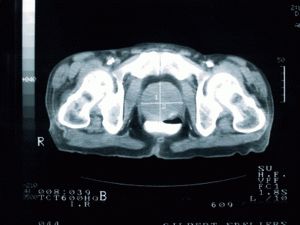Transurethral Resection of Prostate (TURP)

Transurethral resection of the prostate is a surgical procedure, during which tumors or enlarged parts of the prostate tissue are removed. The main purpose of this procedure is to reduce pressure on the urethra and preserve the function of the prostate. TURP may be recommended to patients with a benign tumor of the prostate. The main benefits of this method are the absence of external incisions or long hospitalizations and painful symptoms.
The prostate gland is a walnut-sized organ located in close proximity to the male urethra. It is normally about 2-3.5 cm. The prostate produces the seminal fluid that nourishes and transports sperm during ejaculation.
As a rule, the prostate gland increases in size in men over 40, the result of which may be experienced as a clenching of the urethra and problems with urination. Some symptoms of an enlarged prostate include frequent urination, especially at night, inability to completely empty the bladder during urination, and interrupted urine flow.
If medications do not relieve the symptoms, the physician may suggest a transurethral resection of the prostate, in which a miniature surgical instrument called a resectoscope is passed through the urethra into the prostate. This instrument consists of a tiny metal loop for resecting the tissue, a small reservoir for the liquid, and a source of illumination. Using the resectoscope, surgeons can accurately seal blood vessels and remove a portion of the prostate tissue to relieve the pressure on the urethra.
TURP is not considered a very complicated procedure, and patients usually remain in the hospital for only 1-2 days after surgery. The operation lasts about an hour, and it leaves no visible seams or scars on the skin of the patient. At the request of the patient and upon the recommendation of his doctor, this surgery may be performed using either local or general anesthesia. After surgery, some patients may experience some insignificant bleeding, which usually stops within a few days.
In order to speed up the recovery after TURP, it is important for the patient to follow the doctor’s recommendations. These include a liquid diet rich on vitamins and fiber. The patient should drink at least 1.5-2 liters of water per day to maintain the bladder function and to avoid infection. Furthermore, the patient should refrain from an active lifestyle; avoid physical exertion, and muscle strain during defecation.
In order to avoid additional risk, it is important to choose a high quality medical institution and pay special attention to the qualifications of the surgeon, who will actually perform the procedure, since this kind of surgery requires additional knowledge and experience.
Patients are sometimes concerned that this type of surgery might lead to an impaired sexual function. TURP does not affect sexual function. The only potential deviation in rare cases is retrograde ejaculation, when newly formed seminal fluid may enter into the bladder. While this may occur after such kind of operation, it has no effect on the quality of sexual life. However, there may be some reduction in the possibility of fertility. Speak to your surgeon in advance of this surgery about any concerns you may have.
If you are experiencing the symptoms of prostate enlargement, you should not delay the trip to a specialist. Indeed, the increased pressure on the bladder and the possibility of damage may imply rather serious consequences and can significantly increase the risk of serious diseases. Do not hesitate to schedule a consultation with a doctor!




